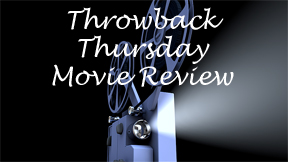Less than a year before Disney bought and plundered “Star Wars,” it took a crack at a sci-fi/fantasy hit with “John Carter” (2012), a grand adaptation of Edgar Rice Burroughs’ 1912 novel “A Princess of Mars.” It crash-landed at the box office, and now could be part of a spiritual quadrilogy with “Jupiter Ascending” (2015), “Valerian and the City of a Thousand Planets” (2017) and “Alita: Battle Angel” (2019) – lavish sci-fi adventures that people rejected in the superhero decade and are waiting to become cult classics.
As I also noted when reviewing “Valerian,” the existence of “John Carter” allows us to clearly see in a wide-release film that an underexamined property had a massive influence on “Star Wars” (and “Avatar” – particularly in the way a copy of John goes to Mars while his Earth self is in statis — but I’ll focus on “Star Wars” here).
Amazingly, most “Star Wars” reference books don’t mention John Carter. Pulling a handful off my shelf, “The Magic of Myth” (1997) references Burroughs only once, pointing to “The Land that Time Forgot” as an example of a lost-world narrative. “Mythmaking” (2002), which chronicles the heavily “Princess of Mars”-influenced “Episode II: Attack of the Clones,” does not mention Burroughs’ work. And he’s absent from the indexes of George Lucas biographies “Skywalking” (1983, 1999) and “Empire Building” (1997). The internet has somewhat cut into this ridiculous oversight in “Star Wars” scholarship.

“John Carter” (2012)
Director: Andrew Stanton
Writers: Andrew Stanton, Mark Andrews, Michael Chabon; based on Edgar Rice Burroughs’ “A Princess of Mars”
Stars: Taylor Kitsch, Lynn Collins, Willem Dafoe
“John Carter,” which finds the titular 19th century Virginia cavalryman (“Friday Night Lights’ ” Taylor Kitsch) wrapped up in a three-way Martian war and a love story with a princess (Lynn Collins), includes many words and names that Lucas would slightly change up under the cover of homage. Among them: Banth (bantha), Jeddak (Jedi), Padwar (Padawan) and Tarkis (Tarkin).
Director Andrew Stanton’s movie gives us evidence that “Attack of the Clones” particularly drew from “A Princess of Mars,” as Barsoom (Mars) looks like Geonosis. Carter’s arena battle against monsters is among the centerpiece action sequences.
A Mars teeming with life
Despite being a key link in the chain of sci-fi influence that continues through Buck Rogers, Flash Gordon, Valerian and Laureline and others, “A Princess of Mars” (which kicks off Burroughs’ 11-book Mars saga) hadn’t itself been adapted to the screen except for an ultra-cheap 2009 movie called “Princess of Mars.” It rates at 3.2 on IMDb compared to “John Carter’s” 6.6.

Book covers, plus Marvel’s “John Carter: Warlord of Mars” comics – which ran subsequent to its early “Star Wars” comics in the late 1970s – had provided peeks of what characters such as the tusk-faced Tharks look like.
Burroughs’ titular character – Collins’ warrior-princess Dejah, who dresses like DC’s cinematic Wonder Woman later would – is often portrayed as having red skin. The film’s designers give her red tattoos to get partway toward that look. On Earth, Carter had been involved in the fight against the Apaches in Arizona, but he personally has no use for the government’s wars. Likely, a parallel is intended as John hits it off with a red-skinned woman from another race.
Despite following the Campbellian hero’s journey beats we know so well from “Star Wars” and the 2010s superhero adaptation boom, “John Carter” holds a viewer’s attention in many ways. By starting in the 19th century, when humans didn’t know Mars was lifeless, we get a verisimilitude about the Red Planet that just barely holds up. For the sake of suspending disbelief, I can imagine societies existed there a century or two ago, and the Mars rovers haven’t found that evidence yet.
Almost leaping toward a saga
“John Carter” has doses of humor (although I would’ve liked more). Held by a Union colonel (Bryan Cranston), John aggressively tries to escape three times, then he’s caught and we smash-cut back to him being held captive again. This is humorous and brisk character development.
Though not great as Gambit in “X-Men Origins: Wolverine,” Kitsch is physically and spiritually well-suited to this heroic role, and he pairs nicely with Collins for a quickly established yet not too shallow bond. It’s surprising that both performers muster mere B-list status now.
While there’s unfortunately a brain-numbing CGI aspect to some of the battles, they don’t overtake the enterprise. Actually, the computer-generated Tharks (with their decent leader, Tars, voiced by Willem Dafoe) are prominent throughout, and they seem part of the environment. Plus, a giant dog-monster becomes a loyal companion to John, and it’s pretty cute.
At 132 minutes, “John Carter” feels overlong in the middle but rebounds with a compelling denouement where writers Stanton, Mark Andrews and Michael Chabon pile on the fantastical sci-fi explaining Carter’s link between Earth and Mars. I would’ve been on board for further adaptations of Burroughs’ saga. By the way, it’s neat that Burroughs (Daryl Sabara) is a character in the story himself.
Though imperfect, “John Carter” holds up as a fun romp, and I want to root for it as one of those films that was adapted last, but from source material that came first. It’s not fair that it’s an also-ran while cranked-out Mouse House “Star Wars” product and kindred properties like “Avatar” and “Dune” thrive. But of course no one ever said Hollywood is fair.

